

Engage prospects with a scan and streamline customer engagement with FREE QR code marketing tools by Sona – no strings attached!
Create a Free QR CodeFree consultation

No commitment

Engage prospects with a scan and streamline customer engagement with FREE QR code marketing tools by Sona – no strings attached!
Create a Free QR CodeFree consultation

No commitment
QR codes have evolved from a novelty to a strategic powerhouse for bridging offline engagement with online action. For concrete cutting services businesses, QR codes offer a practical, frictionless, and effective way to boost lead generation, project access, and secure equipment management without requiring an app download or complex setup. Concrete sawing, drilling, and removal operations demand immediate information access, safety verification, and streamlined communication at the jobsite, yet many firms still struggle with delays, incomplete forms, and visibility gaps.
Shifting from paper logbooks, printed instructions, or manual check-in sheets to QR code-enabled solutions delivers measurable gains in efficiency, compliance tracking, and client satisfaction. These solutions address long-standing industry frustrations such as missing high-value prospects when paperwork is lost and engagement signals are missed by providing instant, accountable access where it is needed most. QR codes act as instant gateways to safety protocols, project documentation, real-time support, or equipment status, empowering crews and customers while surfacing granular engagement signals that are often overlooked in traditional workflows.
This guide shows how QR codes can streamline access and engagement in the concrete cutting industry. It covers core challenges operators face, common cutting methods and safety requirements that benefit from digital enablement, cost and compliance implications, and practical steps to integrate QR-powered workflows for better business results. For background on field adoption, see research on QR in construction.

The concrete cutting jobsite is fast paced and unforgiving. Paper-based systems and siloed digital tools introduce friction between crews, managers, and customers, resulting in missed project documentation, slow mobilization, and lost lead opportunities when actions are not trackable. QR codes bridge these gaps with simple scan-to-action experiences that make every touchpoint measurable and responsive.
To make QR codes work for your business, start by identifying the offline-to-online moments that break down today. Replace printed SOP binders, sign-in clipboards, and one-off email threads with QR code gateways that push people to the right digital destination instantly. From scanning at a site gate to confirm safety credentials, to scanning a machine label to file a maintenance request, to scanning a brochure to request a core drilling estimate, QR-enabled flows keep the work moving and record every interaction.
For concrete cutting and asphalt drilling firms, these workflows replace outdated, error-prone artifacts with instant, traceable QR code solutions. Teams can respond quickly to interest by seeing who engages with project information and enabling targeted follow-up via CRM-connected alerts and automations.

Concrete cutting projects involve multiple stakeholders, high safety standards, and shifting schedules. Field teams struggle with delayed communications, misplaced paperwork, and lack of insight into which clients or prospects are engaging at the jobsite or in preconstruction. These gaps lead directly to errors, rework, and missed revenue. QR codes modernize workflows in ways that match the realities of the work.
By converting passive surfaces into interactive touchpoints, QR codes enable immediate action from printed materials, vehicle signage, equipment labels, and site gates. Instead of hoping someone will type a link or call a number later, a scan prompts the exact next step: confirm access, view safety training, submit a repair request, or request an estimate. Because codes are lightweight and affordable, you can scale coverage across every critical surface without complexity.
In short, QR codes remove friction from the moments that matter most for concrete cutting services: safety compliance, access control, maintenance reporting, and customer conversion. They provide the speed and accountability that paper and ad hoc workflows cannot deliver.
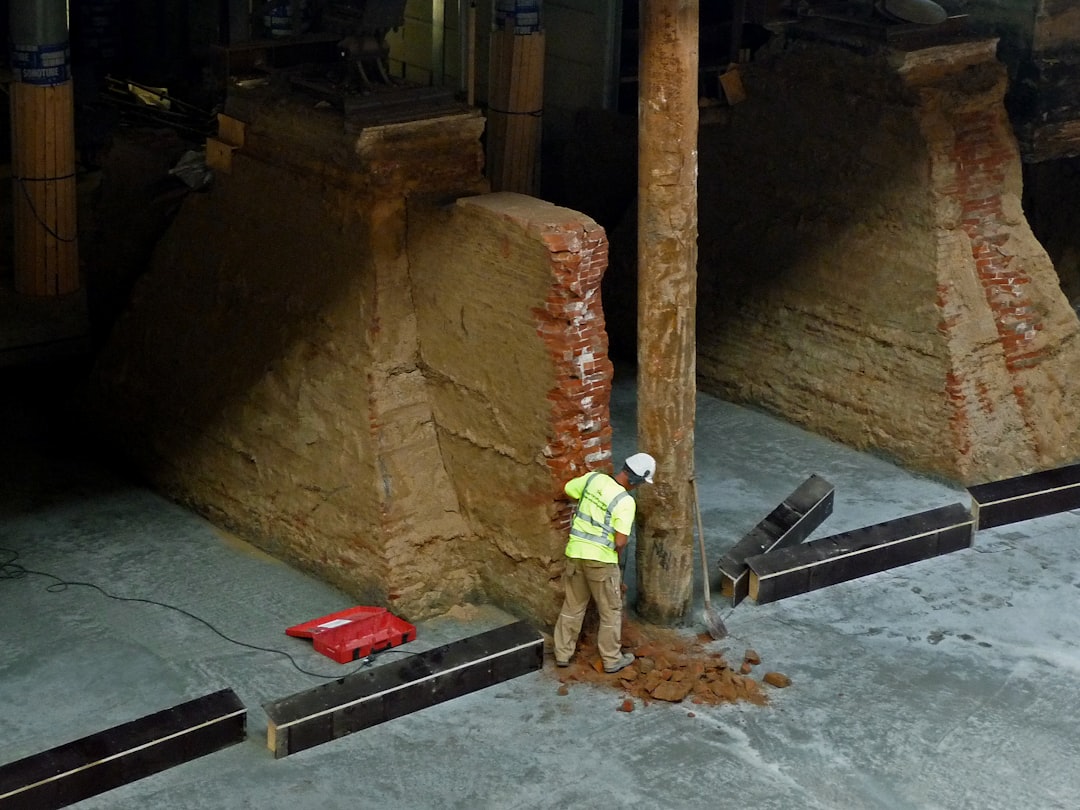
QR codes are versatile, with multiple formats that suit different jobsite and customer needs. Choosing the right format for each touchpoint ensures a clean experience, reduces scanning friction, and makes data collection simple. In concrete cutting, several formats stand out for their practicality in the field.
Web link QR codes are the workhorse for this industry. They route scanners to plan sets, SOPs, safety videos, or estimate forms in a browser. Because they do not require app installs, they are ideal for subcontractors, inspectors, and clients who need quick access. For team-to-team contact handoffs, vCard codes save time by letting someone add a site supervisor or estimator to their phone with a single scan.
With a platform like Sona QR, you can generate any of these formats at scale, manage their destinations, and track performance in one place. Dynamic codes are recommended for most jobsite uses because content and owners often change as projects progress.
Growth is hiding in plain sight at the moments where prospects and clients already interact with your business. Many concrete cutting firms miss these opportunities because engagement signals are scattered or invisible. The right QR placements surface intent at the exact moment someone needs help or information.
Start by mapping your customer journey: awareness at trade shows, consideration through bids and walkthroughs, and conversion during estimates and job scheduling. Then add codes where friction often appears. Make every analog asset an interactive entry point: brochures, door hangers, jobsite signage, invoices, and equipment. When each code is unique to its placement, you gain clarity on which channels actually produce qualified leads and timely responses.
Prioritizing high-traffic touchpoints turns missed or anonymous activity into actionable revenue opportunities. It also reduces manual work for your teams by removing duplicate data entry and chasing emails.
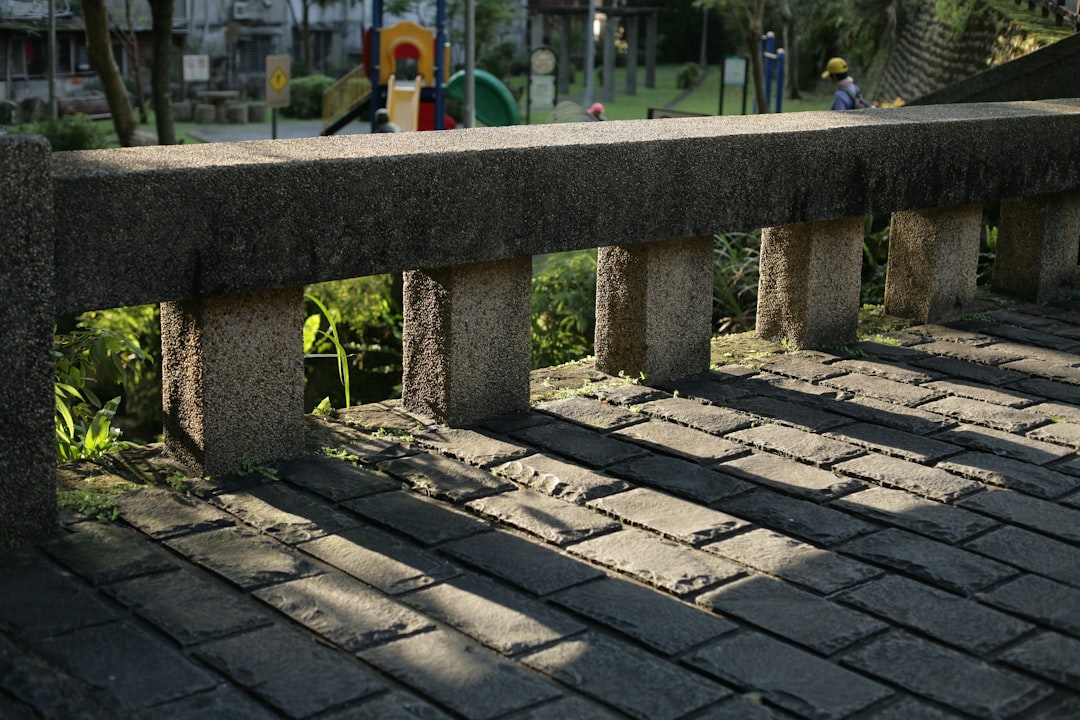
Concrete cutting service providers benefit most when QR codes replace repetitive, error-prone workflows and expose intent that would otherwise be invisible. The highest-impact use cases align with three areas: access control, safety compliance, and customer conversion. Each use case should be linked to a clear business outcome and supported by reporting.
In practice, these deployments make jobsites safer, crews faster, and pipelines clearer. Use distinctive CTAs and code frames that explain the benefit succinctly. For example: Scan to check in takes two seconds, or Scan for MSDS and JHA keeps you compliant. Every scan should feel like a helpful shortcut, not a hurdle.
Select two or three of these to pilot first, then expand coverage once you see adoption. Tie each to a KPI such as reduction in check-in time, increase in estimate conversion rate, or maintenance response time improvement.
Every QR scan is a rich signal. It captures context like location and timing, indicates intent through the code destination, and ties a person’s action to a stage in their buyer or project journey. By deploying multiple codes across touchpoints, you can segment audiences automatically and use that data for precision retargeting and proactive follow-up. For campaign tactics, see Sona’s retargeting playbook.
In concrete cutting, you will engage multiple personas: general contractors, facilities managers, property owners, safety officers, and procurement leads. Scans from each group imply different needs and timelines. For example, a facilities manager scanning a safety SOP on-site has different intent than a building owner scanning a flyer to request slab cutting for a renovation. Use segmented codes so your team can respond with the right message and urgency.
With Sona QR, each code becomes a smart entry point into your funnel. You can capture behavior-based audiences in real time, prioritize high-intent contacts, and retarget based on real actions rather than assumptions.
QR codes connect the dots across offline and digital channels so your marketing and operations run on a single, measurable system. In concrete cutting services, many touchpoints are still physical: jobsite boards, vehicle graphics, door hangers, and printed estimates. By embedding QR codes across these assets, you make it effortless for customers and crews to take the next step, while giving your team a clear view of what is working.
A connected QR strategy creates a closed loop. Someone scans an exhibit sign at a builders’ show, views your wall saw capabilities, then later scans a direct mail piece to book a walkthrough. Every interaction lands in your CRM with source, time, and destination details. When a project moves into active construction, codes on safety boards and equipment keep operations aligned and auditable.
To plan spend across channels, explore Ask Sona’s take on the optimal media mix.
Rolling out QR codes across your operations is best done with a clear plan. Start with one or two high-impact use cases, validate the user experience on real jobsites, and then scale by adding codes to more assets and channels. The steps below keep your rollout focused on outcomes and adoption.
Beyond deployment, treat your QR ecosystem like a product: watch how people use it, review analytics weekly, and refine placements and destinations based on data. Once you have a repeatable pattern for one use case, move to the next and apply what you learned about design, messaging, and analytics.
Identify the single business problem you want to solve first. Pick a use case that is both high value and easy to pilot, such as scan-to-check-in at a frequent jobsite, scan-to-request maintenance on a handful of saws, or scan-to-request estimate on your most used brochure. Define who benefits, what the scanner sees, and how success will be measured in the first 30 days.
Choose the format that matches your use case. If you need to track performance and update destinations, dynamic QR codes are the right choice. For fixed documents like a static equipment manual, a static QR can suffice. Most field workflows benefit from dynamic codes because they allow you to tweak the experience without reprinting.
Design QR assets that stand out and clearly instruct the scanner. Use contrasting colors, add your logo, and include a short call to action that promises a benefit. Before deploying, test scannability from different angles and distances on iOS and Android in realistic lighting and dusty conditions.
Roll out your codes on the assets and locations that touch the intended users most. For access control, mount weatherproof signs at gates and trailers. For maintenance, affix durable labels on equipment near control panels. For estimates, include codes on brochures, yard signs, and invoices. Track each placement with its own unique code so you can attribute performance accurately.
Use a platform like Sona QR to monitor scans by date, time, placement, and device. Review conversion behavior after the scan: Did the crew member complete the form? Did the prospect submit details? Compare channels, test different CTAs, and refine destinations to reduce drop-off. Share wins and lessons learned with your team to drive adoption.
Attributing revenue and operational performance to field activity is a constant challenge for construction trades. QR codes provide the connective tissue between physical interactions and digital outcomes, but you need more than basic scan counts to manage for results. Effective tracking ties scans to contacts, opportunities, and jobs so you can justify spend and double down on what works. For strategy, read Sona’s blog on offline attribution.
A robust analytics stack follows the full journey: scan, destination engagement, form completion, CRM enrichment, and downstream outcomes like booked walkthroughs, approved change orders, or completed safety trainings. With Sona and Sona QR, you can monitor this flow end to end. That visibility lets you optimize mid-campaign and attribute pipeline and revenue to specific placements and messages.
Sona QR captures the real-world engagement data that jobsites generate. Sona.com converts that data into insight you can act on with identity resolution, multi-touch attribution, and buyer journey analytics. The result is a performance loop where every scan is a signal that influences your next move.
Once your initial QR deployments are running smoothly, look for ways to scale impact with standardization, automation, and creative placements. Focus on the media your audience already interacts with, and keep the journey from scan to value as short as possible. Small improvements in design and automation can produce outsized gains in adoption and conversion.
Training and internal communication also matter. Crews and office staff should understand the why behind each code and be able to explain benefits in a sentence. This boosts compliance for safety scans and increases response rates for estimate requests because scanners know what to expect and what they gain.
Make adoption visible. Celebrate sites that hit safety scan compliance targets or estimators who close deals that started with a scan. Internal recognition accelerates culture change and ensures QR initiatives stick.

The fastest way to build confidence is to see QR codes delivering results in situations that match your work. Concrete cutting firms of all sizes are using dynamic codes to tighten safety, speed maintenance, and grow pipeline. The common thread across these wins is thoughtful placement, clear CTA language, and disciplined follow-up. Contractors exploring broader tactics can also review this guide to contractor marketing.
Consider how each example translates to your environment. You might not need the same tools or exact destinations, but the principles apply widely: put the code where action should happen, promise a specific benefit, and ensure the next step is fast and mobile friendly.
Use these examples as inspiration for your pilot. Start where latency and confusion cut into your day, and let QR codes compress those delays into a two-second scan.
Success with QR codes is as much about field craftsmanship as it is about technology. The codes must be scannable in harsh conditions, the destinations must be mobile friendly and fast, and the workflows must align with how crews and clients actually behave. Treat each deployment like a small design project, then refine with real-world feedback.
Common pitfalls include placing codes where glare or dust degrades performance, linking to long forms that are difficult on mobile, or failing to route scan alerts to a responsible owner. Another frequent miss is letting codes go stale when project phases change and content shifts. Dynamic codes and a consistent operations cadence help you avoid these traps.
Ignoring field realities, skipping change management with your crews, or treating QR as a set-and-forget tactic leads to poor outcomes. Ongoing refinement and internal evangelism close the gap between intent and impact and ensure every scan delivers value.
QR codes have redefined how concrete cutting services bridge physical and digital experiences, providing clear solutions for industry challenges like lost paperwork, missed leads, and untracked field engagement. By surfacing hidden signals and making every project site, equipment label, or customer touchpoint into a measurable action, QR-enabled workflows boost both efficiency and revenue opportunities.
Teams that move beyond basic analytics and manual tracking achieve not only improved safety compliance and faster customer responses, but also stronger attribution and better segmentation. This turns previously anonymous activity into actionable insight and helps leadership invest in the channels and messages that work best. With modern QR platforms like Sona QR, concrete cutting companies can act on high-interest signals, uncover upsell opportunities, and ensure every field interaction is leveraged.
If you are ready to fix blind spots in your operation, start with one high-impact use case: access check-ins at a busy site, maintenance scanning on your most critical equipment, or estimate capture on your most distributed brochure. Start creating QR codes for free. Build from there, and make every square inch of your operation an onramp to action.
QR codes have revolutionized the concrete cutting services industry by transforming traditional workflows into efficient, data-driven operations. Whether it’s streamlining project access, enhancing equipment tracking, or ensuring safety compliance, QR codes replace cumbersome manual processes with instant, mobile-friendly actions that deliver real-time insights and operational control. Imagine effortlessly verifying site details or equipment status with a simple scan—saving time, reducing errors, and boosting productivity on every job.
With Sona QR, you can generate dynamic, trackable QR codes in seconds, update information instantly without reprinting, and link every scan to actionable data that drives smarter project management and client communication. No more guesswork or paperwork—just seamless integration of offline tasks into your digital workflow, maximizing efficiency and customer satisfaction. Start for free with Sona QR today and turn every scan into a step toward safer, faster, and more profitable concrete cutting projects.
The article references concrete sawing, drilling, and removal operations as common methods of concrete cutting.
You can identify reliable services by engaging with QR codes placed on brochures, jobsite signage, and equipment that link to estimates, safety protocols, and project documentation, enabling quick access to verified information and faster communication.
Safety measures include using QR codes to instantly access up-to-date safety protocols, training videos, job hazard analyses, and material safety data sheets, ensuring consistent information across shifts and easier compliance audits.
The article does not specifically address the impact of concrete cutting on the structural integrity of a building.
QR codes are described as quick and affordable to create and deploy across existing materials, keeping overhead low while enhancing efficiency and lead generation.
QR codes replace paper-based and fragmented workflows with instant, traceable scan-to-action experiences that reduce delays, improve compliance tracking, enable faster maintenance reporting, and boost client engagement.
Web link QR codes for accessing safety documents and estimates, vCards for contact sharing, SMS or email pre-fills for maintenance requests, Wi-Fi access codes for jobsite networks, and app download links for internal programs are all useful formats.
QR codes enable fast safety check-ins, real-time access to protocols, and audit trails that reduce safety lapses and streamline regulatory compliance.
QR codes on equipment allow for quick access to manuals and submission of pre-filled maintenance requests, reducing downtime and improving service response times.
By embedding QR codes on brochures, invoices, and marketing materials that link to estimate request forms and project information, companies can capture qualified leads and accelerate quote turnaround.
Codes should be large, high-contrast, placed in visible locations like gates and equipment, tested for scannability in dusty or low-light conditions, and include clear calls to action.
Using dynamic QR codes and analytics platforms, businesses can track scan volume by location and time, measure form completions, monitor lead quality, and integrate data with CRM systems for attribution.
Avoid placing codes where glare or dirt impairs scanning, linking to long or mobile-unfriendly forms, failing to update destinations as projects change, and not routing scan alerts to responsible owners.
QR codes provide instant access to project schedules, plan revisions, contact information, and approvals via a single scan, reducing email overload and improving real-time collaboration.
Start by selecting a high-impact use case, choose the appropriate QR code type, design and test codes for jobsite conditions, deploy across relevant assets, and continuously track and optimize performance.
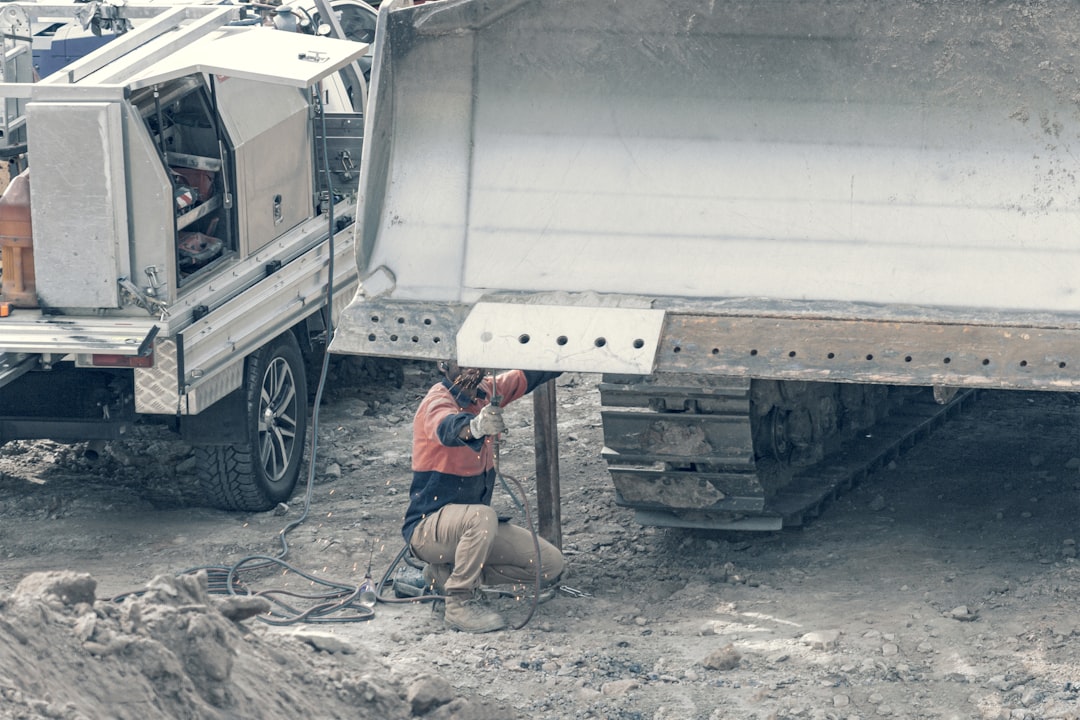
QR codes have evolved from an occasional gimmick into an essential bridge linking offline experiences with actionable online outcomes. For concrete cutting services, this technology unlocks opportunities to streamline information access, connect with potential clients, and empower construction teams, solving persistent pains around disjointed workflows and lost client engagement without adding complexity or requiring a separate app.
Concrete cutting companies face unique challenges: managing timely inquiries at job sites, efficiently delivering critical safety and compliance documentation, and tracking real-world engagement when buyers move from print and signage to digital channels. As both customers and field operators expect seamless, immediate access to job specs, covering everything from concrete sawing techniques and equipment safety checks to instant quote requests, traditional paper-based processes simply fall short. Many high-value prospects slip through the cracks, unmeasured and untracked.
By embedding QR codes throughout their operational touchpoints, concrete cutting services can streamline documentation and automate crucial requests, while capturing and re-engaging high-intent prospects who might otherwise remain anonymous. From compliance checklists to triggered service reminders, QR code strategies create measurable, trackable access that drives tangible benefits for marketing, sales, and operations teams and directly addresses missed opportunities for lead generation and project visibility.

QR codes bridge the gap between job site signage, equipment manuals, permits, and digital requests, helping concrete cutting services overcome frustration with outdated, analog processes and lost paperwork. Whether a superintendent needs a current safety data sheet, a general contractor wants a same-day quote, or an operator must confirm equipment readiness, a simple scan can replace minutes or hours of chasing paper files and phone calls.
Many teams struggle to track customer interest from the moment of first inquiry, especially when prospects visit a site or interact with signage without submitting a form. Modern QR strategies resolve these missed connections by turning physical assets into measurable, user-friendly digital touchpoints. A vehicle decal can become a high-intent lead source. A laminated safety poster can become an always-current compliance hub. A business card can become a direct channel to schedule a site walk.
Here is how to do it effectively:
A centralized QR management platform such as Sona QR supports each step. It enables fast code generation, dynamic destination edits, scan analytics, and integrations with compliance databases and CRMs, all of which reduce lost leads and manual effort while ensuring updates become visible across your entire fleet of codes in minutes.
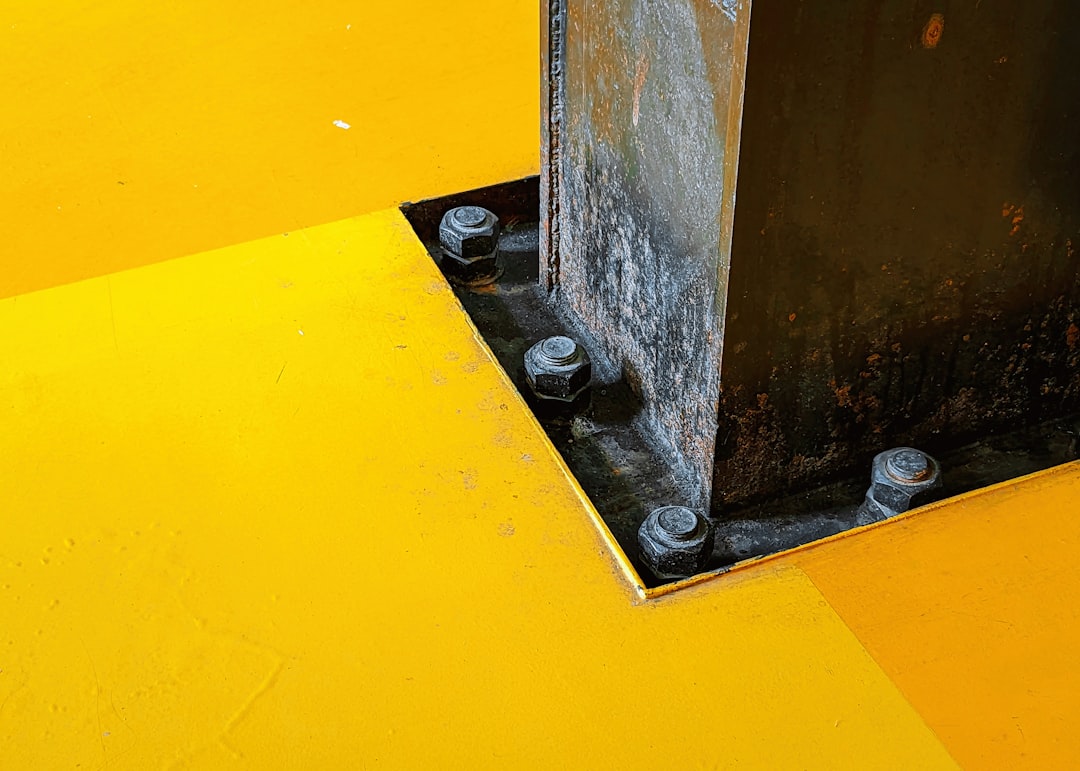
Concrete cutting operators and marketers are often hampered by poor visibility into offline-to-online engagement. Prospects and work crews interact with printed materials, job site signage, and compliance boards, but these real-world touchpoints usually remain disconnected from core workflows. This disconnect means unknown visitors are not tracked, which leads to lost opportunities and inefficient spending on advertising that cannot be measured.
QR codes address these pain points by creating a direct, measurable path from physical interest to digital action. Instead of relying on a phone call that might be missed or a brochure that gets discarded, a superintendent can scan a code to request a quote, confirm documentation, or watch a maintenance clip. Operators can access safe work method statements or hazard assessments immediately. Managers can see which assets, regions, or events are generating scans and lean into what works. For fundamentals, see QR code marketing.
For example, a laminated safety poster that once listed static rules can now connect to a live, version-controlled checklist. Every scan is logged, new hires get up-to-date instructions, and safety officers have audit-ready records without manual consolidation.
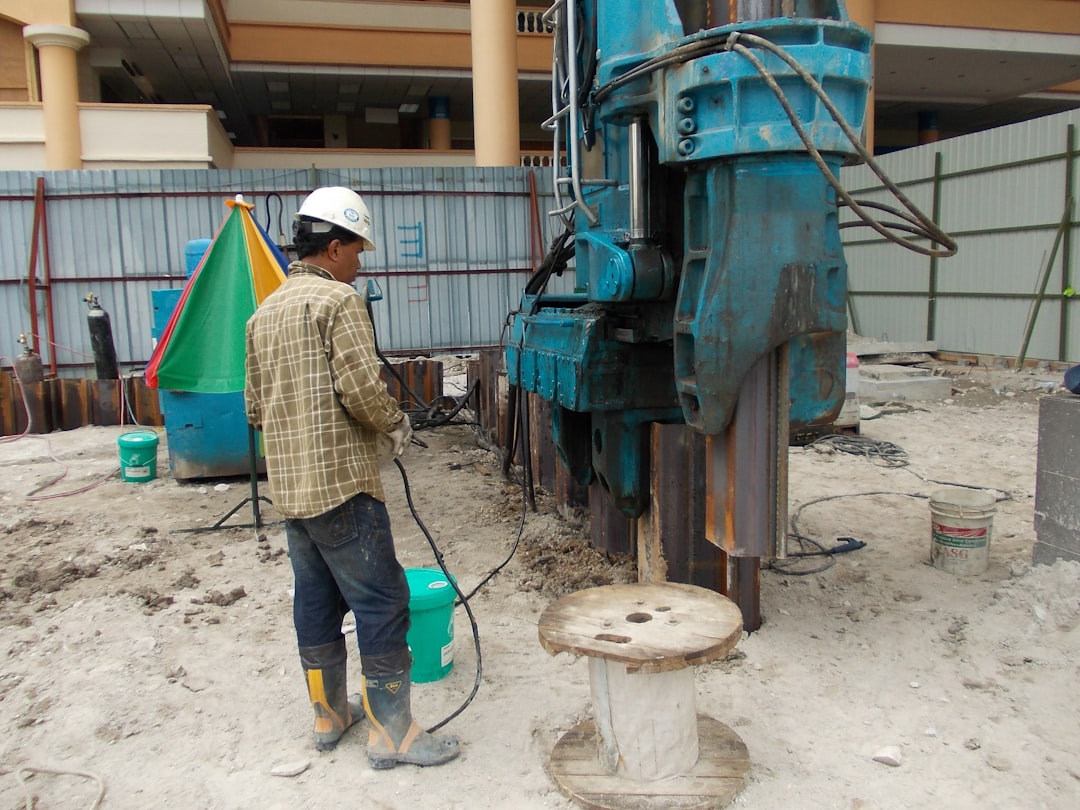
Concrete cutting teams often find that traditional, static processes break down under field conditions. Manuals go missing, phone numbers are mistyped, and email attachments go stale. A range of QR formats can solve these friction points in a structured and trackable way, depending on the job story and the desired action.
Some formats are best for outbound lead generation, while others shine for internal operations and compliance. Selecting the right format for the right environment improves both scan rates and outcomes. The following formats are consistently useful for concrete cutting services:
Dynamic QR codes stand out because they let you change the destination and capture engagement data without creating new codes. In environments where regulations update or job types differ by season, dynamic codes mitigate reprint costs and keep the field connected to the most current resources.
High-value prospects often go unnoticed because companies lack methods to capture and track intent at critical touchpoints. A superintendent might take a photo of a truck for later reference but never follow through. A facilities manager might inspect a completed cut but fail to leave feedback or a referral. QR codes solve these blind spots by embedding clear calls to action where interest naturally occurs.
Every surface and document can become a measurable entry point to your funnel. With small design tweaks and a standardized CTA, you transform brand impressions into booked site walks, documented safety checks, and scheduled follow-ups. The key is to place codes where timing, context, and need are aligned.
When you map these opportunities and assign unique codes per placement, every scan becomes a mini KPI. Your team can see where interest originates, which messages perform best, and which environments are ripe for expansion. Explore Sona QR’s use case library.
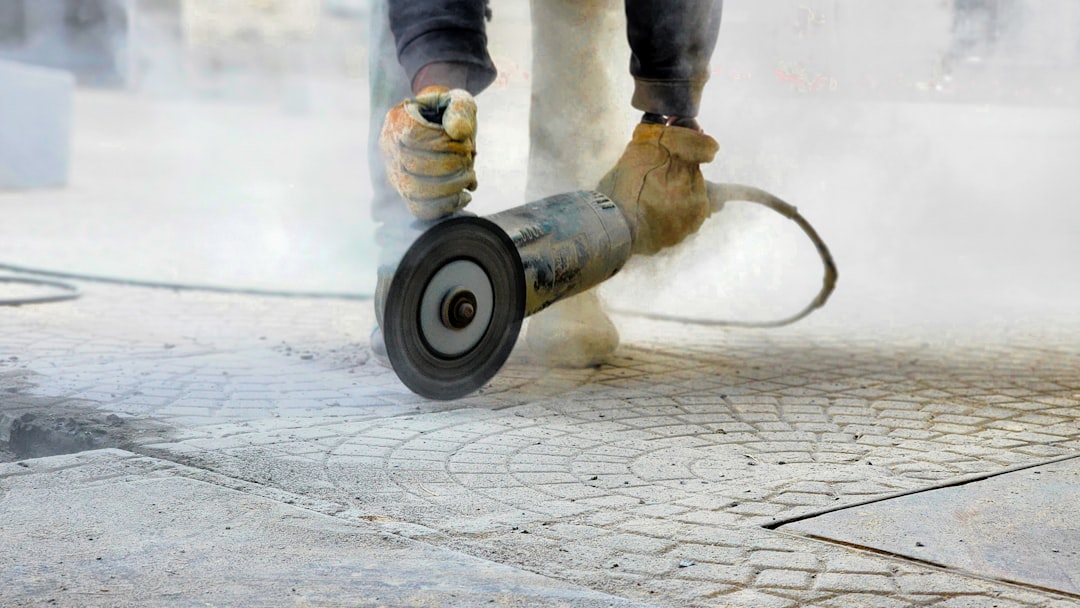
Concrete cutting firms routinely face two recurring issues: valuable inquiries that do not reach a team member at the right moment and completed jobs that fail to generate feedback, referrals, or repeat business. QR-enabled workflows address both by inviting action in the exact context where it matters and by reducing friction in high-pressure field settings.
When you design QR codes around specific job stories, the results compound. Operators get faster answers. Prospects get simpler paths to quotes. Managers get visibility across touchpoints that used to be dark. Below are three high-impact use cases that align with common interactions and measurable outcomes.
In each case, define what success looks like before deployment, such as a 15 percent lift in scan-to-quote conversions or a 30 percent reduction in time spent collecting documents. Then instrument each code to capture the data you need to verify progress.
Each scan is a signal. It contains some combination of who, where, when, and why. By deploying distinct QR codes across your touchpoints, you create automatic audience segments based on behavior rather than assumptions. This segmentation is the foundation for high-ROI retargeting and personalized follow-ups.
Concrete cutting services benefit from segmenting by role and use case because needs vary by context. A general contractor scanning a vehicle code is likely evaluating vendors for an active project. A facilities manager scanning a maintenance tag during an outage may need immediate dispatch. A homeowner scanning a flyer wants education and price ranges. Treating every scanner the same leaves revenue on the table.
With Sona QR, each code can capture and relay rich metadata, then sync it to your tools. This lets you retarget based on real-world behavior, for example, showing a project gallery to event scanners who viewed your wall sawing display, or sending a same-day scheduling prompt to those who scanned pricing boards onsite. See Sona’s Playbook titled intent-driven retargeting: driving high-impact campaigns with first-party intent signals.
Disconnected campaigns produce inconsistent experiences and make it hard to know what is working. QR codes serve as connectors between your physical assets and digital channels in concrete cutting, enabling real-time engagement and consistent data collection across every medium you already use.
This integration is not complicated. It requires defining the primary action for each channel and reinforcing it with a clear CTA placed next to a scannable code. As results come in, you can refine spend and creative where the data shows momentum, while retiring tactics that underperform.
Using a centralized platform like Sona QR allows you to manage all your codes, monitor performance, and sync scan data with your CRM and ad platforms. This creates a connected funnel where every scan enriches your view of the buyer journey, from first impression to signed work order. Start creating QR codes for free.
Launching a high-performing QR campaign in concrete cutting requires clarity, scannability, and instrumentation. The steps below translate strategy into action and help you avoid common missteps like generic codes, weak CTAs, or untracked traffic.
Before you begin, align on one core objective. Then choose placements that fit that objective and the environments where scans will happen. Finally, commit to a measurement plan that tells you which placements and messages earn attention, which convert to conversations, and where to optimize.
Start with the outcome you want to achieve. For lead generation, prioritize scan-to-quote flows on vehicles and job site signage. For operations, focus on compliance access and incident reporting codes placed on equipment and safety boards. For reputation building, design a post-project feedback and referral experience.
Select static codes for fixed destinations like a tool’s PDF manual. Choose dynamic codes for campaigns that require tracking, segmentation, and destination updates. Dynamic codes are recommended for most marketing and operations use cases because messaging and assets evolve.
A QR code is only useful if it gets scanned. Design for visibility in harsh environments, add clear CTAs, and test rigorously across devices and lighting conditions. Use high-contrast colors and a margin of white space to ensure reliable scanning from typical distances at job sites.
Prioritize placements that match your goal. If you want quotes, prioritize vehicles, gate signage, and door hangers near active sites. If you want compliance access, apply codes to equipment, toolboxes, and safety boards. If you want reviews, include codes on final invoices and project closeout packets.
Monitor scan volume, engagement rate, and conversion rate by placement and message. Use A/B tests for CTAs, landing pages, and creative. Feed results into your CRM so scans become sales alerts and follow-up tasks. Iterate quickly to expand what works and eliminate waste.
Measurement remains a critical challenge for concrete cutting firms because untracked engagement produces uncertain ROI and missed revenue. QR analytics solve this by connecting real-world interactions to downstream outcomes such as booked site walks, signed quotes, and repeat work. The result is a clear picture of what to scale and what to stop.
Visibility also improves internal operations. Compliance officers can see exactly which crews accessed live checklists and when. Field managers can report incidents via pre-filled SMS codes, and those events can be logged by location and time. Marketing can verify which fleet wrap designs and copy generate scans and leads.
With Sona QR for code management and Sona.com for attribution, you move beyond vanity metrics to a performance engine that ties scans to revenue. The insights inform creative, placement, routing, and staffing decisions that compound over time.
Teams often deploy generic QR codes with vague CTAs and minimal tracking, which leads to low engagement and unprovable value. A few practical adjustments can change that. Craft benefit-driven CTAs, create unique codes for each placement, and integrate with your CRM so post-scan follow-ups happen automatically.
Consider your environment as well. Job sites are rough on materials. Codes must be weatherproof, resistant to dust and abrasion, and legible from a distance. Train crews to point out codes during safety talks and handoff meetings so scanning becomes a habit, not an afterthought.
Two creative deployment ideas illustrate the point. Add a code to core sample containers linking to a lab submission form and a turnaround tracker. Place a code on final invoices that opens a one-tap review request and a referral form with a thank-you incentive.
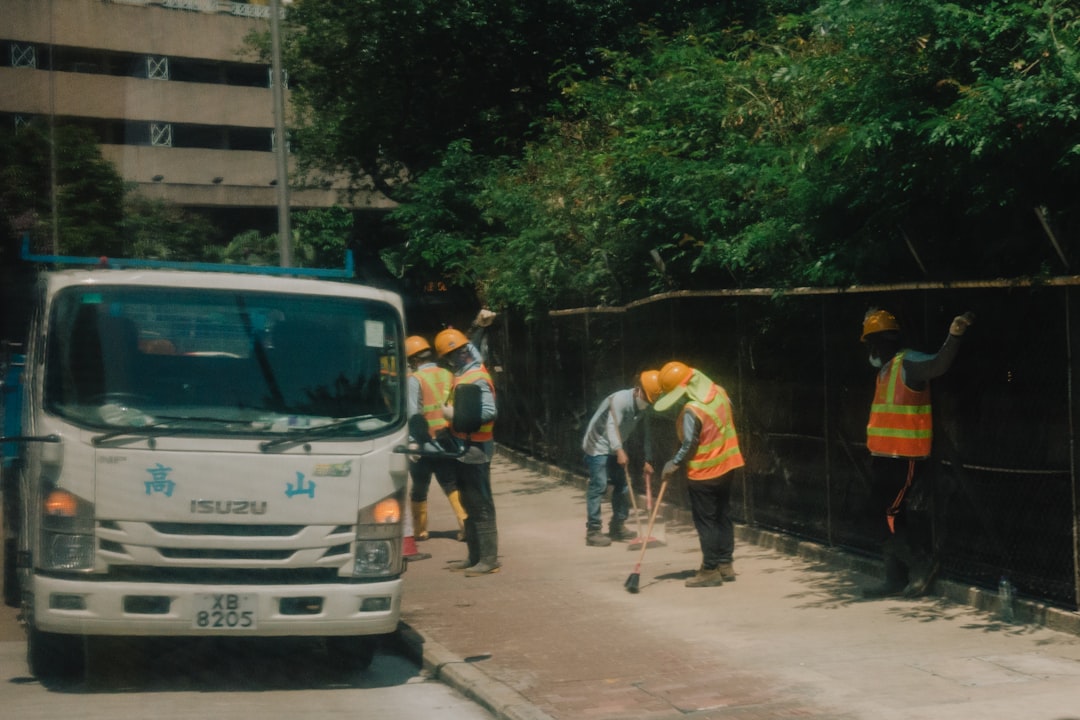
Results improve when QR codes are embedded into everyday processes and supported by training and analytics. These scenarios show what is possible when teams align use cases, placements, and measurement. For a creative build, see this laser-cut QR code.
Look for opportunities to place high-visibility codes where your teams already interact with clients and other trades. Make the offer explicit, track everything, and share wins so field crews see the impact and stay engaged.
Successful QR programs in concrete cutting rely on ruggedization, clarity, and operational buy-in. Choose high-contrast designs, weatherproof materials, and placements that match viewing distance. Pair every code with a strong CTA that answers why scan and what happens next. Brief crews to reference codes during safety and handoff meetings so scanning becomes standard operating procedure.
Common pitfalls are easy to avoid with a little planning. Codes buried in cluttered layouts or placed at awkward heights do not get scanned. Generic destinations waste intent, since a homepage without context forces extra clicks. Neglecting analytics and CRM integration means you will struggle to prove impact or to follow up at the right time.
QR codes are rapidly transforming concrete cutting services by connecting every physical asset and field interaction with seamless digital experiences. They accelerate service requests, streamline compliance, and drive post-project engagement, which solves frustrations around lost prospects, missing documentation, and fragmented campaigns. When combined with automation and CRM integrations, these codes create a repeatable playbook for capturing and converting demand wherever it appears.
Advanced QR strategies do more than patch gaps left by paper-based systems. They create measurable, repeatable growth at every stage of the buyer and project journey. With Sona QR, you can generate and manage codes at scale, route scans to the right experiences, and monitor performance in real time. With Sona.com, you can attribute scans to pipeline and revenue through identity resolution and Single vs Multi-Touch Attribution Models. Start with one high-impact use case, such as scan-to-quote on fleet vehicles, measure results, and expand from there. The path to seamless access and data-driven performance is only one scan away.
QR codes have revolutionized concrete cutting services by transforming traditional project access and information sharing into seamless, trackable interactions. Whether it’s streamlining job site access, providing instant equipment details, or enhancing safety protocols, QR codes replace cumbersome paperwork with fast, mobile-friendly solutions that boost operational efficiency and client satisfaction. Imagine instantly granting authorized personnel access or sharing real-time project updates with a simple scan—saving time and reducing errors.
With Sona QR, creating dynamic, trackable QR codes is effortless. Update access permissions or project info instantly without reprinting, monitor scan activity in real time, and tie every interaction directly to improved workflow and customer trust. No more guesswork—just smarter, more secure, and more connected concrete cutting operations.
Start for free with Sona QR today and turn every scan into streamlined access, clearer communication, and stronger client relationships.
Common use cases include service request forms on signage and fleet assets, compliance documentation on gear and safety boards, and capturing customer reviews and referrals at project closeout.
They can embed QR codes on vehicles, job site signage, equipment, and print collateral to provide instant access to quotes, safety documents, and contact information, turning physical touchpoints into measurable digital interactions.
Dynamic QR codes are recommended for marketing and operations use cases because they allow destination updates and engagement tracking, while static codes suit fixed content like PDF manuals.
QR codes link to live, version-controlled checklists and updated regulations on equipment tags and safety boards, enabling instant access, reducing compliance risk, and providing audit-ready records.
Effective placements include job site signage, access gates, fleet vehicles and trailers, equipment labels and toolboxes, print ads, door hangers, and brochures.
By placing QR codes at high-intent touchpoints with clear calls to action, companies capture spontaneous interest, convert it into booked site walks or quote requests, and track prospect engagement.
Steps include choosing a use case with measurable goals, selecting the right QR code type, designing and testing the code for visibility and scanability, deploying across high-impact channels, and tracking and optimizing performance.
They can track scan context such as time, location, device, and campaign source, measure engagement by channel, respond in real time to scan spikes, and sync data with CRMs for sales follow-up and revenue attribution.
QR codes provide instant access to safety data sheets, hazard assessments, and method statements, enabling operators and supervisors to confirm equipment readiness and follow updated procedures in the field.
By using weatherproof, fade-resistant materials, protective laminates, increasing code size for long-distance scanning, and placing codes at eye level with clear CTAs.
The article does not address the impact of concrete cutting on the structural integrity of buildings.
QR codes are inexpensive to generate, fast to deploy, and easy to scale across various assets, helping improve cost efficiency by turning printed materials into measurable digital gateways.
By scanning QR codes on fleet vehicles or signage, potential clients can quickly access accurate quotes, service details, and contact information, enabling informed and timely decisions.
Use Sona QR's trackable codes to improve customer acquisition and engagement today.
Create Your FREE Trackable QR Code in SecondsJoin results-focused teams combining Sona Platform automation with advanced Google Ads strategies to scale lead generation

Connect your existing CRM

Free Account Enrichment

No setup fees
No commitment required

Free consultation

Get a custom Google Ads roadmap for your business






Launch campaigns that generate qualified leads in 30 days or less.
